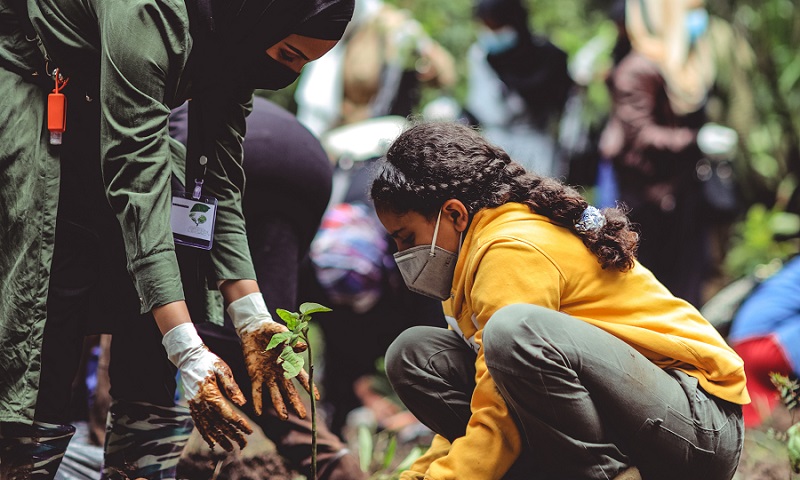 PhotoEyoel Kahssay/Unsplash
PhotoEyoel Kahssay/Unsplash
Rubber trees are excellent indoor plants but care for them well and they can grow up to 3-4m (12-13’) tall in your home. With a dense, tropical appearance and shedding rubber balls as well as fruit when mature–it’s easy to believe that the red flowers on a rub…
What Is a Rubber Tree?
Rubber trees are tropical plants. They are sometimes known as “trepees.” The rubber tree produces latex, which is a permeable, milky white substance made from the sap of the tree. It is used for making rubber, waterproofing shoes and clothing, insulating buildings, and some forms of latex paint!
Rubber tree plants (Eisenia Rotundifolia) are tropical plants that often grow well in warm, humid environments. They are ornamental plants with gorgeous orange flower clusters. Some rubber tree varieties also have variegated leaves that have green and cream edges. These trees also come in shades of light green as well as a deep purple color. After an initial period of flowering, rubber trees produce offshoots called ‘culms’. In time, these cells will grow up to a few feet thick and resemble slightly overgrown grass stems.
How to Care for a Rubber Tree Plant
Rubber trees have also been discovered to help treat ailments such as arthritis and inflammation. To grow a rubber tree, it is important to know the right tree to buy. Do not buy them from a public place or at a plant sale where there may be some different plants mixed in the bucket of trees. It is also important that you take care of your new tree for the first three weeks after buying it. Make sure the area has sunlight and needs six hours of direct sunlight each day. In water, put in two tablespoons of sugar mixed with two cups of water and make sure that this mixture stays moist enough every day.
Rubber tree plants are easy to take care of. In fact, all you need is sun, water, and soil. The soil should be prepared before planting the tree by mixing sand, black compost, and peat moss in order to give it the proper amount of drainage it needs. Once the plant is planted you only need to water it as needed and occasionally fertilize it with a high nitrogen fertilizer once or twice a year. Keep the soil moist at all times, but don’t allow it to tip over.
What are the Benefits of Planting a Rubber Tree Plant?
Rubber tree plants are beautiful and are usually used to beautify a patio. With rubber trees, you don’t need to buy plants from a nursery anymore because they can be set up in water instead of soil. They also need little maintenance if you follow the instructions on the care tag. If you plant your trees near power lines and on roofs, their leaves will grow over this higher foliage and protect them.
Rubber trees are easy to grow and require minimal care. They only need water and light. This is why many doctors, nurses, and hospitals have them in their offices as decoration. Some doctors plant rubber plants just to make the walkways more picturesque. In addition to these benefits, rubber trees produce rubber sap which contains cellulose alcohols. These alcohols can be used in food or medication because they provide lots of flavor without being too harsh on your stomach.
Rubber trees are able to grow over 25 feet in height, which makes them excellent for planting along highways for roadside vegetation. There are unsprayed rubber tree plant alternatives that can also be grown underfoot and cost significantly less than natural solutions. The leaves of a rubber tree plant are also naturally tough and durable, as well as being able to withstand intense cold conditions.
Rubber plants come in different sizes and colors, which is the perfect way to add color to your space with minimal work. However, they also have some extra things to keep in mind while caring for them. They need heat, so they should be placed near a lightbulb that stays on at all times. Keep them away from any pets, as rubber derivatives can be toxic if ingested by animals.
To have a successful rubber tree plant, it is essential to give the plant enough water, filter chlorophyll, and lime immediately. The plant should be flushed twice a day with clean water and the soil should be sprayed with a solution of 1 part chlorine to 10 parts water twice daily. It’s also important that the grower does not mix any household chemicals in their glue traps. They can lead to fungal problems for plants that are sensitive to toxins and disrupt their digestive system. Rubber tree plants are used in many different types of applications. They can be decorated with bulbs and hung on trees, or they can be planted on a window sill. The leaves are also great for crafting. Once you have taken care of your rubber tree plant, you can start working on your project!






